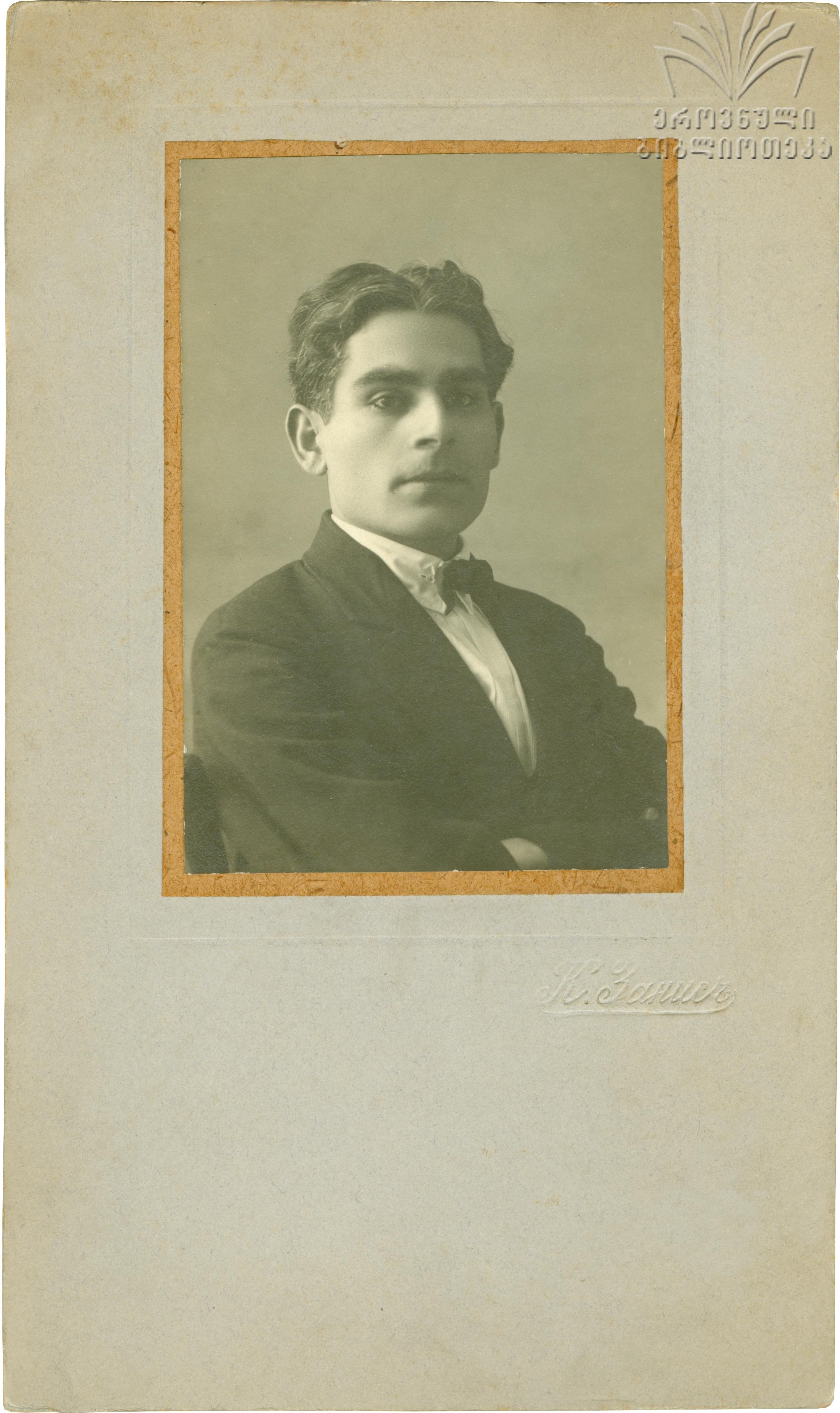
Photograph of Lado Gudiashvili in Paris, in 1925 by Konstantin Zanisi; it is in public domain and available from Russian Wikipedia and the National Parliamentary Library of Georgia (accessed: July 2, 2018).
Lado (Vladimir) Gudiashvili
, 1896 - 1980
Lado Gudiashvili (ლადო გუდიაშვილი, Ладо Гудиашвили) was one of the most prominent Georgian artists of the 20th century. He studied at the Tiflis School of Fine Arts and Sculpture (1910–1914), was a part of futurist movement, then lived in Paris, studying at the Académie Ronson (1919–1926), going into “La Ruche” residence together with Amedeo Modigliani, Natalia Goncharova, Mikhail Larionov and others. His early works were based on medieval Georgian traditions and French symbolism. He was very fond of Caucasian and Persian traditional art. Gudiashvili worked in different styles and techniques. He returned to Soviet Georgia in 1926.
After the return to the USSR Lado Gudiashvili was accepted by the Soviet authorities and even decorated with a badge of honour in 1937. However in 1945 he was expelled from the Communist Party and fired from his teaching position at the Academy of Arts for making frescoes for the Kashveti Church in Tbilisi. In 1958, he once again became an honourable member of society and received the Lenin’s Order and other decorations.
Source:
Official website (accessed: July 2, 2018).
Bio prepared by Hanna Paulouskaya, University of Warsaw, hannapa@al.uw.edu.pl
Records in database:


